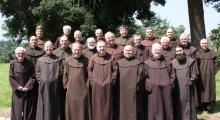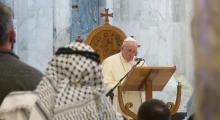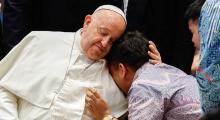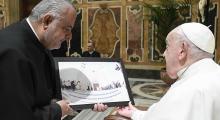Issued by the Catholic Center for Studies and Media - Jordan. Editor-in-chief Fr. Rif'at Bader - موقع أبونا abouna.org
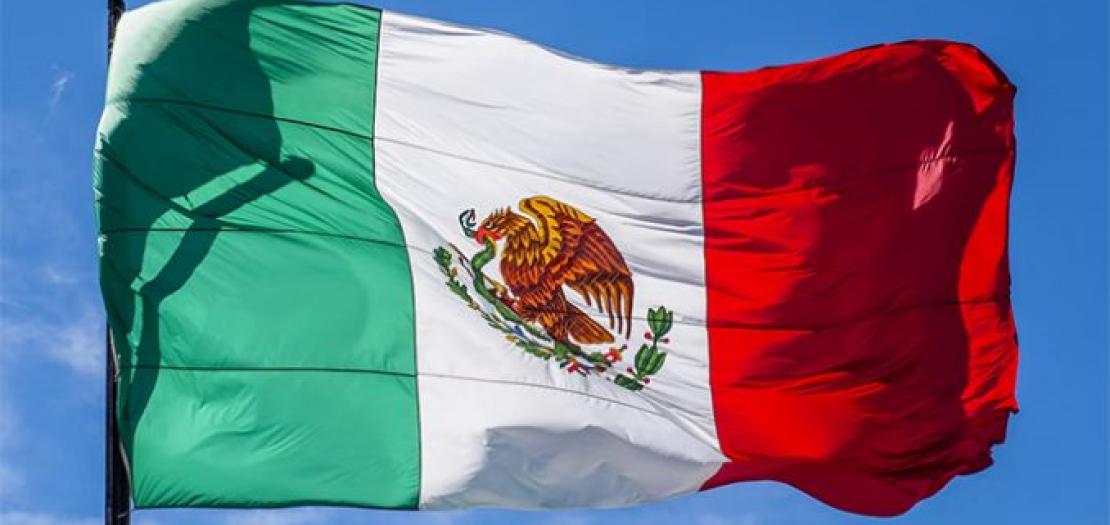
Recent episodes of violence against the Catholic Church, including the murder of a priest and the attempted murder of an archbishop, once again bring to the fore the persecution of the faith in Mexico and the power of organized crime.
On May 22, Augustinian priest Javier García Villafañe was found shot to death in his car on the Cuitzeo-Huandacareo highway. The Michoacán state attorney general’s office stated that he “was killed by several gunshots.”
Days before, an 80-year-old assailant tried to stab to death the archbishop of Durango, Faustino Armendáriz, in the cathedral sacristy after Mass was finished. Fortunately, the prelate was barely injured in the failed attempt.
In addition, in recent weeks there have been various cases of desecration and sacrilege in different churches in the country.
Is Mexico still a Catholic country?
In a May 25 interview with CNA’s Spanish-language news partner, ACI Prensa, Marcela Szymanski of the pontifical foundation Aid to the Church in Need (ACN) pointed out that a little less than 100 years ago Mexico suffered intense religious persecution against Catholics at the hands of the Mexican government.
“There were deaths, violence for years,” said Szymanski, who holds a doctorate in international politics and is editor-in-chief of the Report on Religious Freedom.
The period of religious persecution suffered by the Catholic Church in Mexico at the beginning of the 20th century is known as “Cristiada.” In 1926 the attacks against the faith triggered the Cristero War, the armed confrontation between Catholics and the Mexican Army that ended in 1929, although numerous civilians and Cristeros were killed in government reprisals after the official end of the conflict.
The “Cristiada,” she noted, “is still not taught in schools, in free textbooks. Nothing about this religious persecution.”
“People continue to think and continue to feel that Mexico is a Catholic country,” she continued, but asked: “Where does this notion come from? This notion stems not only from the fact that they don’t know that there was persecution but also from the fact that during the last 40 years Mexico has still been a Catholic country despite the prohibitions on practicing or living their religion in public and in private.”
Szymanski lamented that for “about 30 years Mexican marriages have been falling apart,” while families no longer maintain a solid Catholic formation and have abandoned attendance at Sunday Mass.
According to the National Institute of Statistics (INEGI) for the year 2011 in Mexico there were 16 divorces for every 100 marriages. By 2019, there were already double that number with 32 divorces for every 100 marriages. In 2021, there were 33 divorces for every 100 marriages in Mexico.
“Mexico has been carried away by the anti-Christian trend that comes from the West. The vandalism attacks on the churches, the buildings, the attacks on the religious, are always against the Catholics, not against the 22 mosques that exist in the country,” she pointed out.
“Mexico has been losing traditional family religiosity for decades,” she added.
For the year 2000, according to INEGI, Catholics represented 89.7 per cent of the population. Twenty years later the percentage decreased to 77.7 per cent, while an increase in Protestant Christians and people “without religion” was noted.
For Szymanski, in Mexico, “we have a significant mixture of ignorance with a lack of social cohesion that makes it seem natural or normal to attack the institutions, the Catholic Church, and everything that it represents.”
“The notion that it’s an actual crime is lost,” she said. However, such acts are prohibited under Mexican law.
Drug trafficking and murdered priests
Father Omar Sotelo, director of the Multimedia Catholic Center (CCM), also interviewed by ACI Prensa May 25, noted that “for more than 10 years, Mexico has been the most dangerous country to exercise the priesthood in all of Latin America, and it is one of the primary places in the entire world.”
According to a CCM report, between 1990 and 2022, 63 priests were murdered in Mexico, including the archbishop of Guadalajara, Cardinal Juan Jesús Posadas Ocampo. Just in the last four years, during the current administration of President Andrés Manuel López Obrador, nine priests have been killed.
According to the report “Missionaries murdered in the year 2022” by the Vatican Fides foundation, Mexico recorded three homicides of priests last year. Only Nigeria recorded a higher number: Four priests were killed there.
“In theory,” he stated, “it’s not a country that has the problems of war or something like that. However, it’s one of the primary countries where exercising the priesthood is dangerous.”
“In Mexico, we have counted at least 25 or 26 churches that have been desecrated, attacked, robbed, looted, violated in a week,” he explained.
For Sotelo, “it’s a clear sign that organized crime has practically overrun the authorities.”
He also noted that there are places in the country where “there are no police” because drug traffickers are the ones who govern those areas.
“Drug trafficking has practically positioned itself strategically throughout the national territory and they have put many of the authorities in check,” he lamented.
In this crisis situation, he explained, a priest “works 24 hours a day, seven days a week” as a “social stabilizer,” giving “aid, defense, protection to all and to the migrant” as well as “health services.”
“The priests compete against organized crime. When they eliminate [a priest], they send two very strong messages: One, if I am able to kill a priest, I can kill whomever they want. Second, by eliminating a priest they are not killing just one person, they are attacking this entire community and this stability,” Sotelo explained.
“Then a narco-culture, a narco-politics, a narco-economy is created,” he warned.
The permanent persecution of the Church
In a statement to ACI Prensa, CNA’s Spanish-language news partner, Hércules Medina Garfias, the auxiliary bishop of the Archdiocese of Morelia who offered the funeral Mass for the recently murdered priest Villafañe, pointed out that the Catholic Church “from the beginning has been persecuted.”
“Our Lord… was persecuted by Herod, who had the Holy Innocents murdered and the Holy Family had to flee to Egypt,” he said.
In the Bible, he pointed out, “there are many passages about persecution of the first Christian community. The Apostles were persecuted.”
Being persecuted, he stressed, “is a good sign that we are doing things right, and it’s part of our history.”


